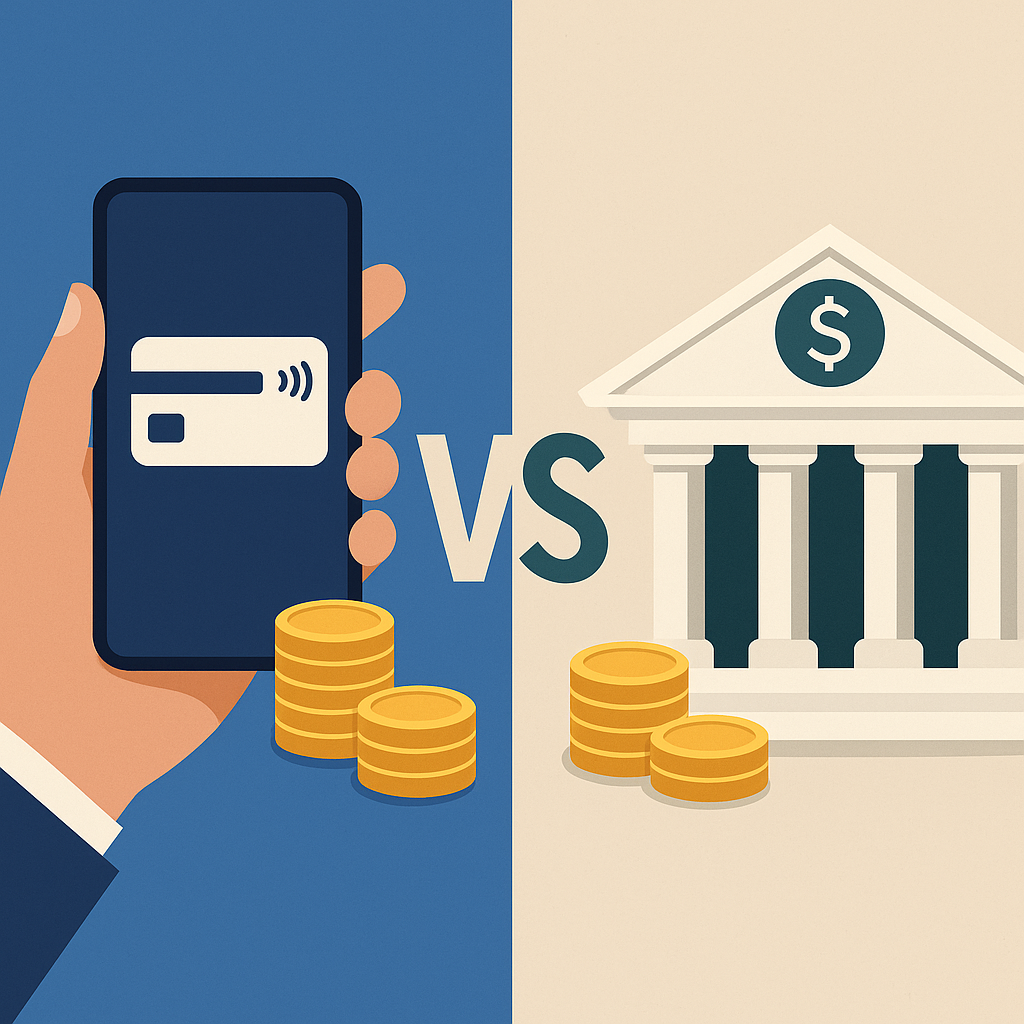Banking has undergone a major transformation over the past decade. What used to require a visit to a brick-and-mortar branch can now be done with a few taps on your phone. With the rise of digital banking apps, consumers are rethinking how they manage money—and whether traditional banks still have the edge.

In this article, we’ll compare digital banking apps and traditional banking across features, convenience, costs, and security to help you decide which option best fits your lifestyle.
What Are Digital Banking Apps?
Digital banks, also known as neobanks or online-only banks, operate without physical branches. Everything—from account setup to money transfers—is done online via an app or website.
Popular digital banking apps:
- Revolut
- N26
- Monzo
- Wise
- Chime
- Nubank (Brazil)
- Bunq
They focus on user experience, speed, and low-cost services.
What Is Traditional Banking?
Traditional banks are institutions with physical branches, ATMs, and in-person customer support. Think of banks like:
- HSBC
- Santander
- Barclays
- Bank of America
- Deutsche Bank
- Crédit Agricole
They offer a wide range of services including loans, mortgages, investment products, and more.
Comparison: Digital Banking Apps vs Traditional Banks
| Feature | Digital Banking Apps | Traditional Banks |
|---|---|---|
| Accessibility | 24/7 via app | Business hours, in-person visits |
| Account Setup | Instant and paperless | Can take days, requires documents |
| Fees | Low or no fees | Higher fees, maintenance charges |
| Customer Support | Chat and email-based | In-person, phone, email support |
| Financial Products | Limited (mostly debit and savings) | Wide range (loans, credit, etc.) |
| ATM Access | Limited free access (with caps) | Extensive network with own ATMs |
| International Use | Real-time FX, multi-currency | Less flexibility, higher FX fees |
Advantages of Digital Banking Apps
✅ Ease of Use
User-friendly apps allow for fast transfers, budgeting tools, and real-time notifications.
✅ Low or No Fees
Many digital banks eliminate fees for maintenance, foreign exchange, or overdraft.
✅ Multi-Currency Accounts
Ideal for travelers, freelancers, or digital nomads.
✅ Fast Setup
Open an account in minutes using just your ID and phone—no paperwork.
✅ Innovative Features
Round-up savings, spending insights, crypto access, and budgeting tools.
Advantages of Traditional Banking
🏦 Established Trust
Centuries of reputation and strict regulation make people feel secure.
🏦 In-Person Assistance
Speak with a representative for complex issues like mortgages or business loans.
🏦 Full Financial Services
Access to investment products, retirement planning, loans, and insurance.
🏦 Larger ATM Networks
Easier to withdraw cash with fewer limits or extra fees.
When to Choose a Digital Banking App
Choose a digital bank if you:
- Want to avoid traditional fees
- Travel frequently or work across borders
- Prefer using your phone for all financial tasks
- Need quick access and modern tools
- Are comfortable with 100% online service
Ideal for:
- Students
- Freelancers
- Remote workers
- Tech-savvy individuals
When to Stick With Traditional Banks
Choose a traditional bank if you:
- Want face-to-face service
- Need large-scale loans or mortgages
- Run a local business
- Require advanced financial planning
- Prefer the familiarity of in-person support
Can You Use Both?
Absolutely. Many people use digital banks for daily spending and traditional banks for savings, loans, or business.
Example combo:
- Use Revolut for travel and payments abroad
- Use Santander or HSBC for salary deposits and credit products
This hybrid approach gives you flexibility, security, and access to specialized services.
Security Comparison
Both digital and traditional banks are generally safe, but differ in structure:
- Digital banks often have real-time alerts and advanced encryption
- Traditional banks are heavily regulated and offer deposit insurance
Key tip: Always choose banks regulated in your country or the EU for safety and coverage.
Final Thoughts
So, which one wins—digital banking apps or traditional banks?
Answer: It depends on your needs. If you want speed, low fees, and modern features, digital banks are the clear winner. But for complex financial products and in-person advice, traditional banks still hold value.
In most cases, a blend of both gives you the best of convenience and security. Choose what fits your financial lifestyle—and be open to evolving with new tech.
